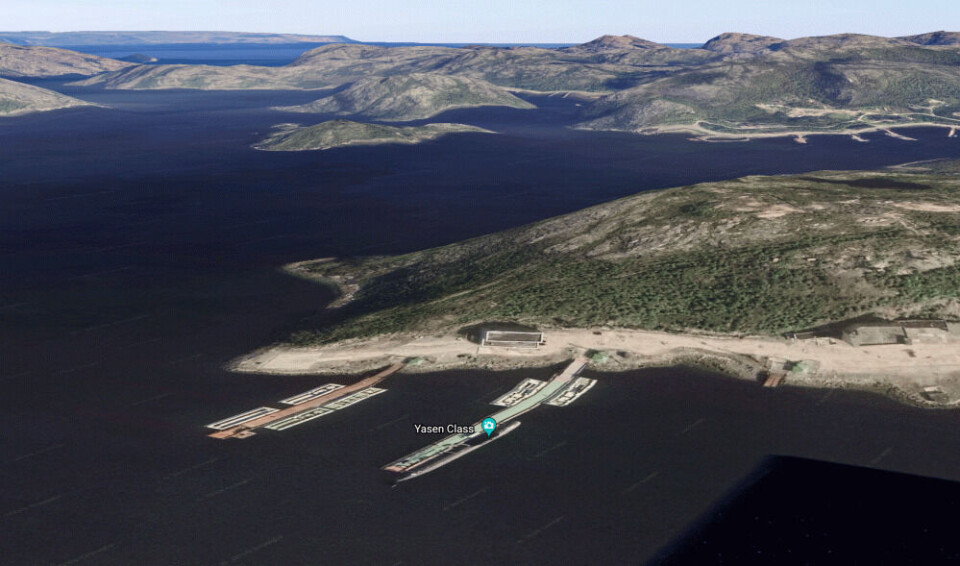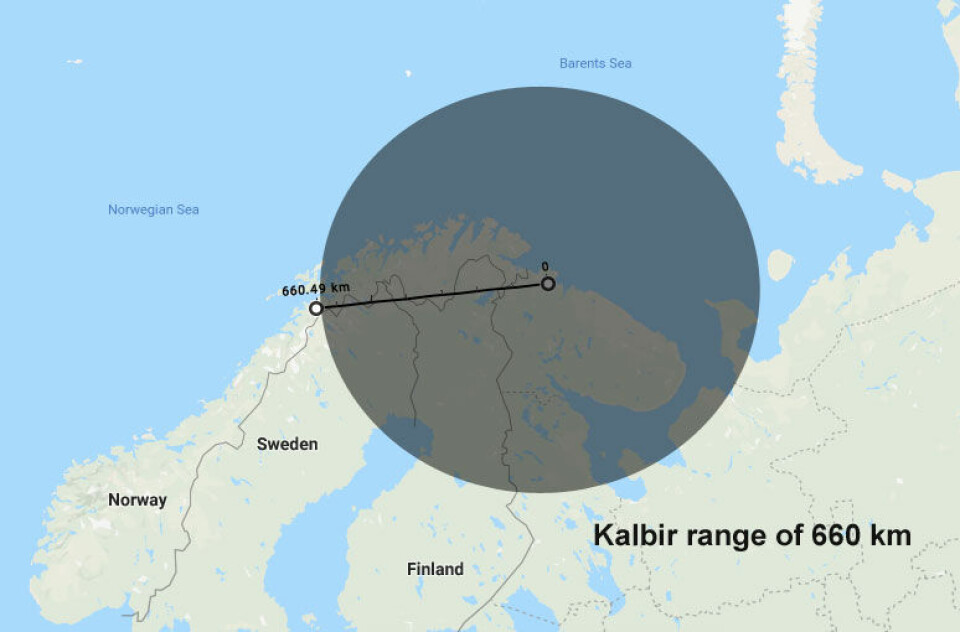
Russian sub launched cruise missile without leaving port
"Severodvinsk" is Russia's most advanced submarine and is based less than 60 km from the border to Norway.
The Russian Northern Fleet’s newest and most advanced multi-purpose submarine, the “Severodvinsk”, has fired a Kalibr cruise missile without leaving the pier, Izvestia reports.
It is said to be the first time a nuclear-powered submarine has launched a cruise missile directly from the base, a move drastically shortening the time it takes to make a submarine’s weapons ready for combat. During Cold War times, Soviet ballistic missile submarines were ready to launch intercontinental nuclear weapons while moored, but according to Izvestia, this hasn’t previously been the case with multi-purpose submarines.
The submarine-launched version of Kalibr cruise missile has a range of up to 660 km.

“Severodvinsk” is the first Yasen-class multi-purpose submarine. She started to sail for the Northern Fleet in 2014 and has Zapadnaya Litsa on the Kola Peninsula as home base. This is the westernmost base with the Northern Fleet, located a short 60 km from the border to Norway.
Within the next few years, six more Yasen class submarines will be added to the Russian Navy of which at least three is expected to sail for the Northern Fleet. The first one in line is “Kazan” – to be delivered to the Northern Fleet later this year.
Syrian war
The Kalibr cruise missile has proved to be highly effective and precise in strikes against both sea- and ground targets. During the Syrian war, the sea-based version of the missile was repeatedly launched from both submarines and surface warships in the Mediterranean against targets inside Syria.
Theoretically, the Kalibr missile launched from a Yasen class submarine moored at the base in Zapadnaya Litsa can reach targets in most areas north of the Arctic Circle in northern Norway, Sweden and Finland within minutes.
“The possibility of launching cruise missiles directly from the berth significantly increase the combat effectiveness of submarines,” says Igor Kudrin to Izvestia. Kudrin is a well-known expert on Russian submarines and today head of the St. Petersburg Submarines’ Club.
In a war scenario, Kudrin explains, “Does the fleet not always have time to deploy, necessary for the vessels to sail out from the pier and proceed to the pre-assigned area of attack. Submarines should be able, if necessary, to launch their main weapon right there, without departing from the pier.”
Nuclear warhead
At a meeting in Kremlin with Defense Minister Sergey Shoigu in December 2015, President Vladimir Putin confirmed that cruise missiles, like the Kalbir and Kh-101, can be tipped with a nuclear warhead.
“Both the Kalibr missiles and the Kh-101 rockets are generally showing very good results. We now see that these are new, modern and highly effective high-precision weapons that can be equipped either with conventional or special nuclear warheads,” the President said according to the transcripts from the meeting.
Putin and Shoigu were talking about the warfare in Syria.
Zircon cruise missile
Yasen-class submarines could in the future also be armed with Russia’s new Zircon hypersonic scramjet powered cruise missile. With a speed of up to Mach 5 or 6, some 6,125 to 7,350 km/h, to a range of 500 km at low level and up to 740 km if flying semi-ballistic, according to Wikipedia.
In March, news agency TASS reported that the “Kazan” submarine will test-shoot a Zircon cruise missile next year. The same news article quotes Vladimir Putin of saying the missile can reach speeds of about 9 Mach and has a range of more than 1,000 km.
Showing military muscles
Senior Research Fellow Njord Wegge at the Norwegian Institute of International Affairs (NUPI) says to the Barents Observer the cruise missile launch from the submarine’s base on the Kola Peninsula is a way for Russia to show military capabilities.
“One should be careful with interpreting the missile launch as an escalation of the current situation, but rather view the event as a way for Russia display its capabilities and posture as a military great power,” Wegge says.
“At the same time, it seems reasonable to interpret the event as yet another signal of Russian dissatisfaction with recent western military practices, e.g. the US flying B-52 bomber planes closer to Russia.”
In the current situation Wegge emphasize that it is important for all parts to operate within the framework of international law, and to be as transparent and predictable as possible when conducting military training, to avoid misunderstanding an unnecessary escalation.
…. we hope you found this article interesting. Unlike many others, the Barents Observer has no paywall. We want to keep our journalism open to everyone, including to our Russian readers. The Independent Barents Observer is a journalist-owned newspaper. It takes a lot of hard work and money to produce. But, we strongly believe our bilingual reporting makes a difference in the north. We therefore got a small favor to ask; make a contribution to our work.
















